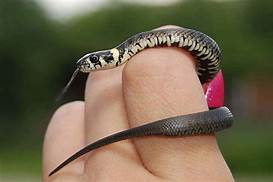What Is a Good Snake to Have as a Pet?
If you're thinking about getting a snake as a pet, there are a few things you need to consider. First, you need to make sure that you have the time and resources to properly care for a snake. Snakes can live for many years, and they require a lot of attention and care. You also need to make sure that you choose a snake that is a good fit for your lifestyle and experience level.

Choosing the Right Snake
There are many different types of snakes that make good pets, but some are better suited for beginners than others. Here are a few of the most popular pet snake species:
1. Corn snake: Corn snakes are docile and easy to care for, making them a good choice for first-time snake owners. They come in a variety of colors and patterns, and they are typically relatively small, reaching lengths of up to 4 feet.
2. Ball python: Ball pythons are another popular pet snake species. They are known for their calm and gentle demeanor, and they are also relatively easy to care for. Ball pythons come in a variety of colors and patterns, and they can grow to be quite large, reaching lengths of up to 6 feet.
3. Milk snake: Milk snakes are another good choice for beginner snake owners. They are typically docile and easy to care for, and they come in a variety of colors and patterns. Milk snakes can grow to be quite large, reaching lengths of up to 8 feet.
Caring for Your Snake
Once you've chosen a snake, you need to make sure that you have everything you need to properly care for it. This includes a cage, substrate, heating and lighting, food, and water.
1. Cage: Your snake's cage should be large enough to allow it to move around comfortably. It should also be escape-proof and have good ventilation.
2. Substrate: The substrate is the material that covers the bottom of the cage. It should be absorbent and easy to clean. Some popular substrate choices include aspen shavings, coconut husk, and cypress mulch.
3. Heating and lighting: Snakes need a warm environment to thrive. The cage should have a heat source, such as a heat lamp or a heat pad, that keeps the temperature between 75 and 85 degrees Fahrenheit. The cage should also have a light source, such as a fluorescent bulb, that provides 12 hours of light per day.
4. Food: Snakes are carnivores and they need to eat a diet of live or frozen rodents. The type of rodent you feed your snake will depend on the size of your snake.
5. Water: Snakes need access to fresh water at all times. The water should be changed daily.
Handling Your Snake
Snakes are not typically aggressive, but they can bite if they feel threatened. It is important to handle your snake gently and with respect. Here are a few tips for handling your snake:
1. Wash your hands before and after handling your snake.
2. Support your snake's body with one hand while you hold its head with the other hand.
3. Never grab your snake by the tail.
4. If your snake bites you, don't panic. Just gently remove it from your skin and wash the wound with soap and water.
Conclusion
Snakes can make great pets, but they are not for everyone. It is important to make sure that you have the time and resources to properly care for a snake before you bring one home. If you do, you can enjoy a long and rewarding relationship with your new pet.
Declaration: All article resources on this website, unless otherwise specified or labeled, are collected from online resources. If the content on this website infringes on the legitimate rights and interests of the original author, you can contact this website to delete it.





